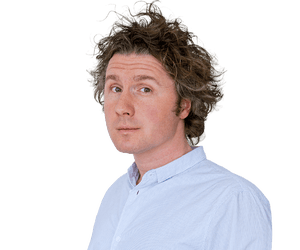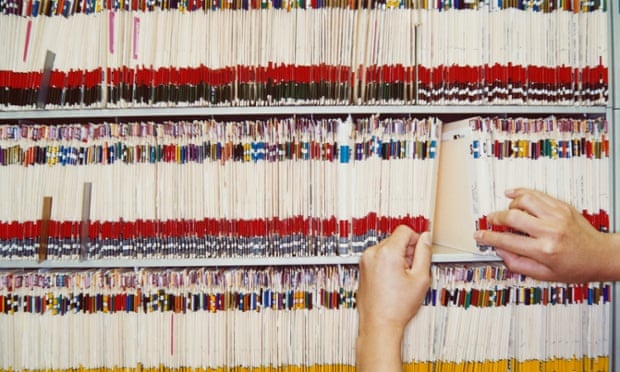There’s lots of death in the world. Transport is risky, for instance—planes, automobiles, trains and ships can crash, maiming or killing passengers. You don’t have to go much further than seeing the road toll, or hearing about Malaysian Airlines Flight MH17 shot down over the Ukraine, or watching the TV scenes of the Costa Concordia, run aground just off Isola del Giglio near the coast of Italy, to appreciate that death is never far away.
Then there’s infectious diseases. You can all-too-readily catch a cold, or the flu, or TB, or lately, the Ebola virus. And there seem to be never-ending wars and skirmishes in the Middle East; and terror, spread by fundamentalists.
Each of these, depending on fate, can hasten someone’s demise. Wrong place, wrong time, wrong circumstances.
Lifestyle issues can cause problems for your risk profile too—but these are slower, and more stealthy. Think of smoking, drinking too much, eating yourself into a coma or just gross obesity, or the more insidious dangers of sitting at a computer for years on end with little exercise. These can translate over time into heart or lung disease, diabetes, and cancer.
Whether you are active or passive, things you do or don’t do can shorten your lifespan, or kill you a little or a lot faster than you would otherwise last. So what levels of risk do you actually, quantitatively, face in your own life?
*****
Stanford University decision scientist Ron Howard in the 1970s presented a novel way to calculate this risk. He introduced the idea of the micromort, defined as a one-in-a-million likelihood of death. This is such an evocative unit of measurement that it deserves a little further attention.
If you live in the US or another relatively rich, OECD-style country, with good law and order, legislation that keeps society relatively risk free (such as with environmental and public health issues sorted out, effective building codes, and so forth), a well-educated population, access to health care, and a buoyant GDP, you can expect a micromort of one on any particular day. Another way of saying this is that’s the standard expected death rate for any individual today in any one 24 hour period: a microprobability of one in a million is your index of baseline risk.
These are great odds for you, today, as you read this; you are very likely to get through it. Congratulations if you do.
What circumstances lead to an elevated risk? Say if you do dangerous things or even just live life to the full? How does your micromort level get upgraded?
In the United States, you accumulate an extra 16 micromorts each time you ride a motorcycle 100 miles, for instance. Or 0.7 micromorts are added for each day you go skiing; so go for a week and you’ve added five more.
Or you might decide to do something a little more strenuous. With hangliding, the additional risk of dying equates to eight micromorts per flight; or skydiving, nine per freefall.
They are relatively benign compared to moving up to base-jumping. Do so, and you rapidly earn many more risk points: 430 micromorts per jump, in fact.
Marathon running, anyone? That will be seven micromorts to your debit account for each run. Even walking 17 miles adds one micromort, as does a 230 mile car trip, and add another one for every 6,000 mile train trip. But the puzzle is, it’s not always clear how to treat these: the walking introduces an element of risk (you could be out and about and get run over, or be struck by lightning) but it’s also beneficial (it contributes to improved health).
Perhaps even more interesting, there are microprobabilities associated with accumulated chronic risks in contrast to these other single-shot event risks. These are lifestyle choices and behaviors that incrementally add a little more risk through exposure. They won’t kill you if you have bad luck on a given day, but will slowly have an effect—and may claim you in the end.
Every half a liter of wine exposes you to a micromort because it can accrue into cirrhosis of the liver. Each one and a half cigarettes does the same, but the menace here is cancer or heart disease. Even eating 100 char-broiled steaks, 40 tablespoons of peanut butter or 1,000 bananas sneaks up on you in the form, respectively, of cancer risk from benzopyrene, liver cancer risk from aflatoxin B or cancer risk from radioactive potassium-40.
*****
Hang on though. I doubt I’ve done much to help anyone.
Because a clear problem is that people aren’t very good at doing these kinds of statistics, or applying them to their own lives—and are even less capable of acting on them. We can readily appreciate that skiing or motorcycling add some risk for the time you are doing them compared to the everyday activities of being at work or hanging out at home, yet many people are undeterred. People even cheerfully find ways of taking on more risk, such as by climbing Everest, driving fast cars, or having unsafe sex.
Everyone knows about that steadily accumulated risk, too: not too many of us are blind to the fact that drinking too much alcohol can lead to liver disease or smoking to lung cancer over time. And although both have been falling for decades, this hasn’t stopped millions of people indulging. There’s 42.1 million US smokers at last count, or 18.1% of the population, and on average each adult US citizen consumes 8.6 liters of alcohol annually.
This is not the best performance internationally but is by no means high by international standards, and Eastern Europeans smoke more heavily, and really give hard booze like vodka a nudge. Nevertheless, both activities contribute to what public health people quaintly call excess deaths and the rest of us know by “their drinking or smoking (or both) killed them eventually.”
But what does it actually mean that you expose yourself to increased risk if you go out walking regularly or eat bananas? We need another way of looking at this, because it’s too hard to do the sums.
*****
Enter the University of Cambridge medical statistician David Spiegelhalter and his colleague Alejandro Leiva who invented the idea of a microlife. This is another unit of risk which has the calculation built in for you. It is half an hour of your life.
If you increase your risk by one micromort, then this shortens your life by half an hour. These calculations apply to people on average, and work out for entire populations, but any one of us might be lucky or unlucky, depending on our individual characteristics. Any particular risk doesn’t convert exactly to the specific individual. But with enough people in the US (beyond 316 million now) and on the planet (7 billion and rising), there’s a relentlessness accuracy about the statistics.
So now let’s do some life expectancy math with Spiegelhalter. Smoke a pack a day? You lose up to five hours a day. Accumulated, that’s up to eight years off your life. Have six drinks a day and that binge costs you one half hour allocation—a shortened life by ten months or so. Stay eleven pounds overweight and you sacrifice half an hour every day you do so (another ten months across your lifespan), as you do if you watch TV for two hours. Your coffee habit at 2-3 cups daily takes away another half hour lot. So does every portion of red meat each day. Another ten months each time.
It’s not all negative. There’s good news. Eat five serves of fruit and vegetables every day and you gain up to a couple of hours each time. You get three years back. Exercise and the first 20 minutes per day earns you a surprising hour (there’s a good investment—a year and a half), and each subsequent 40 minutes adds up to one more half hour bonus to your credit (a bit more work but that seems a pretty good deal, too, to get a ten month return).
If you have a hobby, activity or diet and it’s not been dealt with so far, you can fill in some of the gaps with some good guesstimates. Do you have passive pursuits, akin to watching TV? This is a net deficit. Do you do active, exercise-oriented activities, such as weekly amateur netball, soccer, bowling or basketball—or just walking regularly? Add some lifespan.
These half hour allocations alter somewhat depending on your genetics of course (you can have lucky or unlucky genes) or your socioeconomic status (wealthy people typically live longer than poorer folks) or your gender (women on the whole live longer than men). That said, with this idea you are now able to alter your risk profile by changing your behavior with a tangible, calculable return.
*****
There’s a punchline to this, and it may be already occurring to you as you reflect on your own lifestyle and lifespan. There are a million microlives in fifty seven years of existence. That, for many of us, is roughly the adult allocation.
Let’s call that your life expectancy baseline. We can assume that you have had a reasonably healthy childhood (not so for everyone, of course, but true for many US children, and true for most readers). Then, from that point on, a large part of your healthy adult life is now measureable.
So: come out of your teens, reach your 21st birthday, and as the “jolly good fellow” and “happy birthday to you” songs subside, imagine you then have 57 years to go. That is, you have an allocation of 78 years in total, maybe a little longer, maybe a little shorter.
Yes, all sorts of unexpected things might happen along the way, but to some degree your lifespan is now no longer vague, but quantifiable. The actual life expectancy in the US indeed hovers around this: it’s 79.8 years overall, 77.4 for males and 82.2 for females. (It’s higher in some northern European countries and Japan, but that’s a story for another day).
However, you might be reading this thinking: Yikes. I’m not 21: I’m a bit older than that. In this case, you’ve already used up a proportion of your time left. Console yourself. At least you got through the riskiest stage of all: being a baby, up to one year of age, and childhood, up to six or so, when many things can go wrong.
But have you used what you were given so far, well? Or do you have a fair bit of regret?
To make an obvious point, however, this isn’t Doctor Who. You don’t have a Tardis to go back in time and fix the past. So stop any lamentations. Look forward.
By now, if you’ve come to value more readily each half hour and especially the cumulative effect of your lifestyle choices to date, don’t listen to me preaching. Feel completely empowered. You know what to do and how to alter your own numbers.
Now, all that’s left is to do the math. You’ll have a much clearer picture of your life and potential death than ever before. It’s your move: what’s next?
Further reading
Blastland, Michael and Spiegelhalter, David (2014). The Norm Chronicles: Stories and Numbers About Danger and Death. New York: Basic Books.
Howard, Ronald (1984). On fates comparable to death. Management Science 30 (4): 407–422.
Spiegelhalter, David (2012). Using speed of ageing and “microlives” to communicate the effects of lifetime habits and environment. British Medical Journal 345: e8223.
Spiegelhalter, David (2014). The power of the MicroMort. BJOG: An International Journal of Obstetrics & Gynaecology 121 (6): 662–663.







